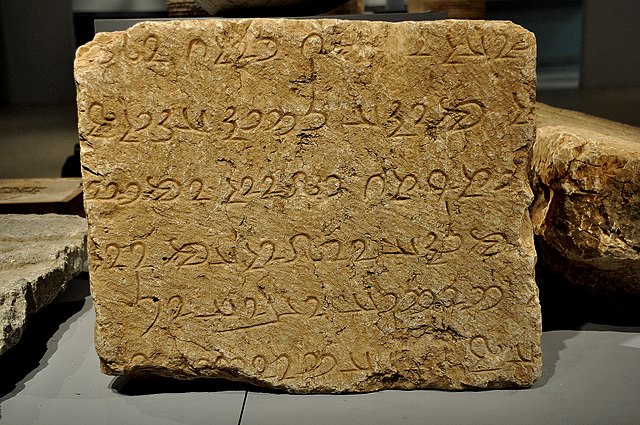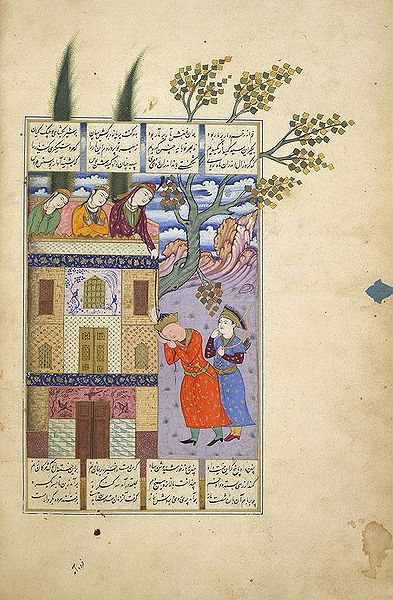The Behistun Inscription is a multilingual Achaemenid royal inscription and large rock relief on a cliff at Mount Behistun in the Kermanshah Province of Iran, near the city of Kermanshah in western Iran, established by Darius the Great. It was important to the decipherment of cuneiform, as it is the longest known trilingual cuneiform inscription, written in Old Persian, Elamite, and Babylonian.
Punishment of captured impostors and conspirators: Gaumāta lies under the boot of Darius the Great. The last person in line, wearing a traditional Scythian hat and costume, is identified as Skunkha. His image was added after the inscription was completed, requiring some of the text to be removed.
Full figure of Darius trampling rival Gaumata.
Head of Darius with crenellated crown
Route to inscription at upper right.
Persian, also known by its endonym Farsi or Parsi, is a Western Iranian language belonging to the Iranian branch of the Indo-Iranian subdivision of the Indo-European languages. Persian is a pluricentric language predominantly spoken and used officially within Iran, Afghanistan, and Tajikistan in three mutually intelligible standard varieties, respectively Iranian Persian, Dari Persian, and Tajiki Persian. It is also spoken natively in the Tajik variety by a significant population within Uzbekistan, as well as within other regions with a Persianate history in the cultural sphere of Greater Iran. It is written officially within Iran and Afghanistan in the Persian alphabet, a derivative of the Arabic script, and within Tajikistan in the Tajik alphabet, a derivative of the Cyrillic script.
An Old Persian inscription written in Old Persian cuneiform in Persepolis, Iran
Middle Persian text written in Inscriptional Pahlavi on the Paikuli inscription from between 293 and 297. Slemani Museum, Iraqi Kurdistan.
Ferdowsi's Shahnameh
Kalilah va Dimna, an influential work in Persian literature








